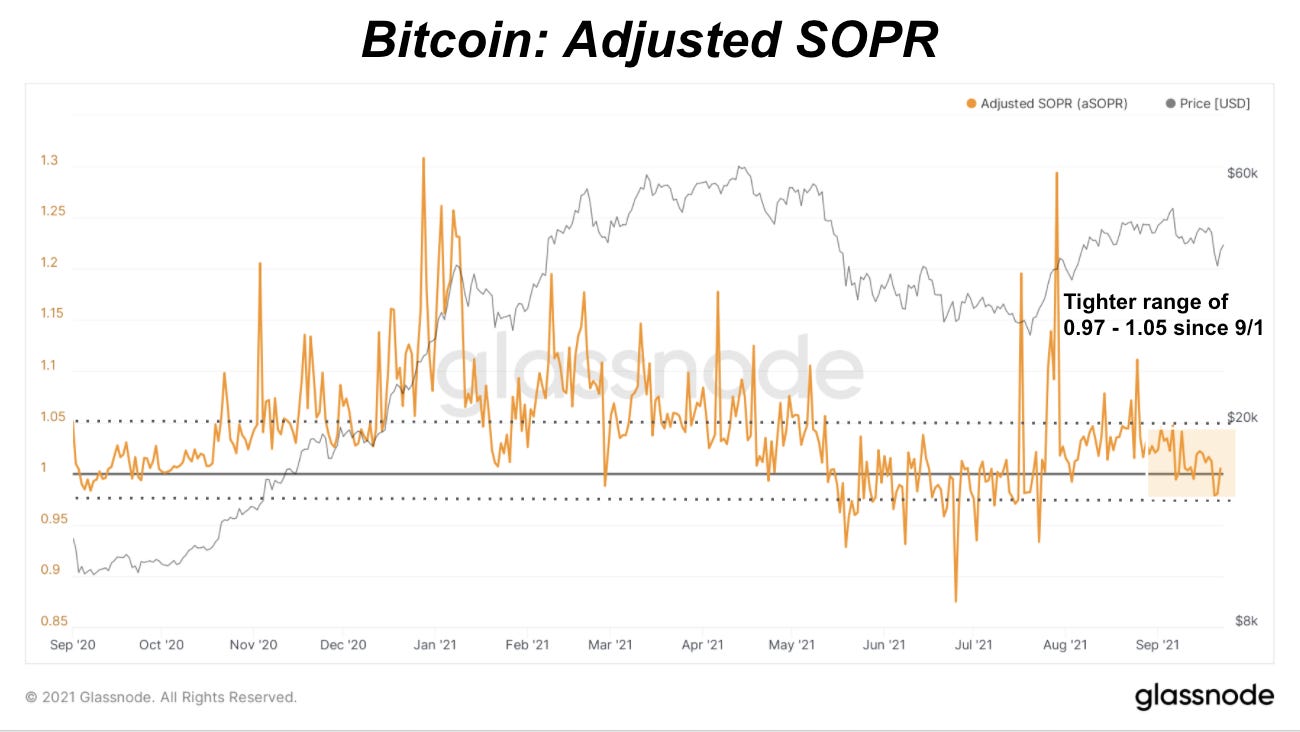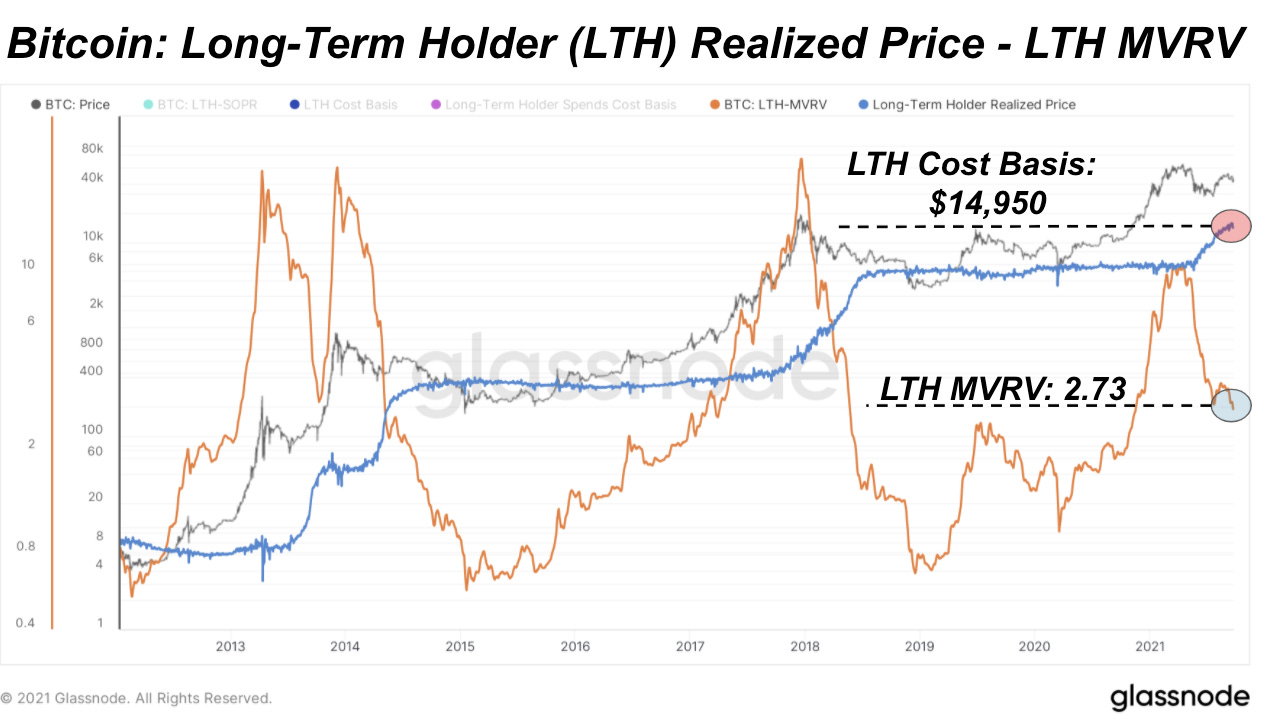The Daily Dive #066 - Holder Cost Basis Analysis
SOPR And LTH Cost Basis
In today’s Daily Dive, we cover the latest profit and loss trends in the market looking at various on-chain metrics and dynamics, across spent output profit ratio (SOPR), long-term holder cost basis, spent volume and long-term holder MVRV (the deviation between market value and realised value).
First up is the spent output profit ratio, which tells us the degree of realized profit or loss for all coins moved on chain. When SOPR trends higher, profits are being realized (value greater than 1). When it trends lower, losses are being realized (value less than 1). We use ”adjusted SOPR” which ignores all outputs within a lifespan of less than one hour.
During the 2020Q4 price move-up, we saw strategic profits being taken which is more evident when looking at just long-term holder SOPR. After a higher period of profit taking then and realizing losses in the summer, we're in a tighter compressed profit and loss range of less than 3% to 5% signaling that the market is waiting for bitcoin's next move.
Over the last few months, we've also seen long-term holders realize lower, more volatile returns on their sold coins (relative to earlier in the year at ATHs) indicating an increase in their cost basis of coins. During the bull market, long-term holders were realizing 300-500% profit returns selling much older coins with a lower cost basis. Now we see those returns starting to cool off as their cost basis has grown to $14,500 from $68,000 since June.
In the sell-off over the last few days, we can see that spent bitcoin volume for coins older than one year only accounted for less than 0.5% of all spent volume. Long-term coins, the “smart money,” were held onto during this price move which was driven by Evergrande market reactions and a larger S&P 500 correction, as covered in the Daily Dive #063.
Contrast this with 3.5% of spent volume back in January around similar prices, and it is clear that long-term holders are sitting tight. This is an increasingly bullish development and supports the supply-squeeze thesis. The free float of coins available on the market continues to get smaller while long-term holders continue to sit on their hands.
When examining long-term holder market value to realized value (MVRV), it can be observed that bitcoin looks to be nowhere near being overheated. In April of this year, long-term holder MVRV topped at 10.93, meaning that long-term holders were sitting on an average of 993% return on their holdings. Since then that number has decreased, as the increasing cost basis of long-term holders — which now stands at $14,950 — as well as the pullback from the $64,000 high has caused the metric to meaningfully fall in value to 2.73.










